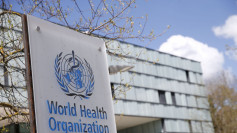Nowadays, the use of plastic has been an essential part of our lives. Because of the demand, the industry is producing about 300 million tons of these every year, as estimated by the UN Environment, with a total of about 8.3 billion tons since the 1950s.
Over the years, experts found out how these plastics have been harmful to our environment. But did you know that a recent study conducted showed another way how these plastics are presently affecting our lives negatively? According to the scientists who conducted the study, plastics have already dominated our environment so much that it has already contaminated the foods we eat as well.
According to the study published by the ACS journal Environment Science & Technology, researchers found out that an average American per year consumes approximately about 39,000 to 52,000 microplastic particles. That is when it comes to food and water alone. But if the researchers will include the plastic particles they breathe, the total particles that enter in their body have probably increased by 35,000 to 69,000.
Though most people are already aware of other negative effects of plastics especially when it comes to our environment, there are only limited studies that show how these can directly affect humans, and these risks are still unresolved. "Microplastics are ubiquitous across ecosystems, yet the exposure risk to humans is unresolved," stated by the researchers of the study.
These statistics are just estimates, and there is still a very high possibility that the real digits are higher due to several factors such as data and methodological limitations. This truth makes the experts even more worried.
So, why did these microplastics end up in our food? Experts from an online health blog Body and Soul explained one way how these microplastics may have found its way to the food we eat. There are probably about billions and billions of plastic in our environment at present that slowly breaks down to smaller pieces. Their sizes are often too small even for small animals to see. That's why these particles are accidentally consumed by the fishes, clams, shellfish, and other sea creatures, which eventually ends up in our tummy and our body.
There is still unclear information about how these microplastics affect our health. But experts advise reducing your plastic intake just to make sure. One can do that by limiting the use of plastic bags, bottles, or containers that could shed microplastics in our water and food.






